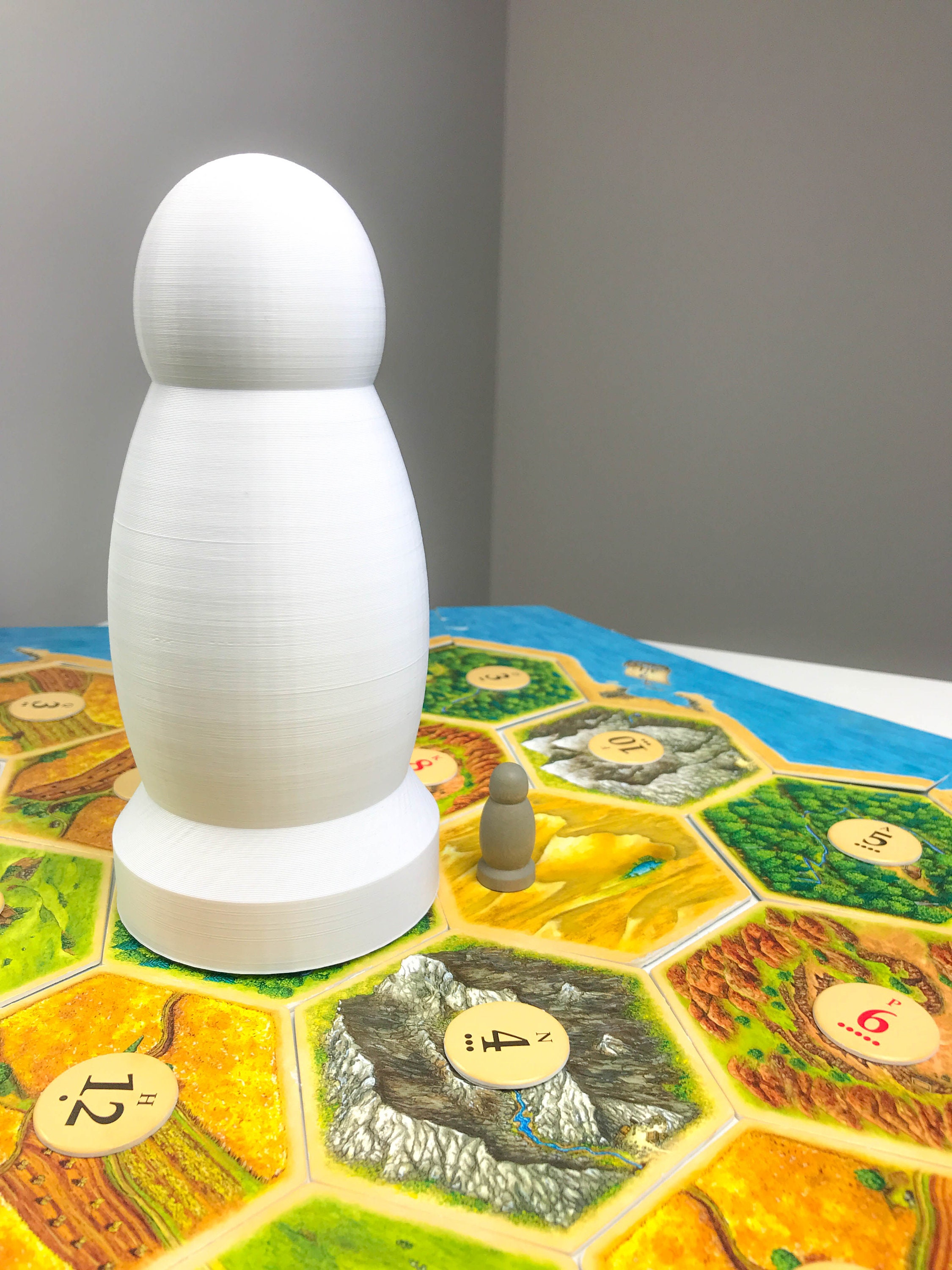

This is done by creating resource replicas that can be moved and placed on the tiles. The solution is not moving the tile but moving the resources on the tiles to reflect the tiles drawn. Many of these tiles weigh anywhere from 160lbs to 240lbs (depending on the thickness of the tile). There is no way you are picking up and moving the tiles I have created in any sort of timely manner. The board is always different and is generated by mixing up the tiles and then randomly selecting tiles to create the island. This is a key feature to Settlers of Catan.
#Giant catan board how to
Next comes the part that before I started the project was how to make it so the Island is not always the same island when your tiles are heavy. I still need to pour the slab on the other side but we will get there in time. This took more concrete in the end but as you can see from the results below, it’s pretty good. Taking the 6 tiles and installing them into their proper place (flattening and compacting the ground), I then took the forms that I had created and used those to pour the remaining tiles in place. I looked at my options and decided to take another route. After pouring the first 6 tiles I realized that I really didn’t want to flatten and compact the entire game site where the game board was going to be. Below you can see the next step which is actually installing the tiles. The post ended with the creation of hexagon forms and the pouring of 6 tiles for the board. The first post can be found here (after Sam talks about art stuff) and this is a part 2 to that post. If anyone who has been following the blog from the beginning or has perused through the blogs, I started a project to create a giant sized Catan game in my backyard. I think it says something about how much a person enjoys a game or pays homage to a game when they take the time to design, and create from scratch the game components. One of the cooler ones I have seen is a Twilight Imperium Table with 3D planets and ships scaled to a much larger size. I have seen some truly amazing and talented upgrades and builds.
#Giant catan board upgrade
In this community of gamers who upgrade their games, there is an even smaller community of gamers who create and have a DIY approach to upgrades.

I enjoy nice components, sculpted miniatures, and coins/tokens with some heft.

I love playing a game that has been decked out with upgrades. However, today we will be sharing one of my personal favorite things about the hobby and that would be…people who upgrade their games! That would be the part of the hobby that enjoys game design, and not just designers and publishers who sell their games, but those who create games and enjoy discussing the nuts and bolts of game design. One of these groups we have given a lot of attention. As I have “matured” in the hobby over the years, I have discovered that there are different sections and groups within the board gaming community. Instead, it’s focus is going to be on another part of the gaming hobby that I personally enjoy.īefore we get to the subject, I would like to briefly discuss one of the interesting things about the gaming hobby. We are not going to be focusing on game design, theory, or game mechanics. Today’s blog post is going to be a little different. The Great Thing About the Board Gaming Hobby is….Upgrades!


 0 kommentar(er)
0 kommentar(er)
